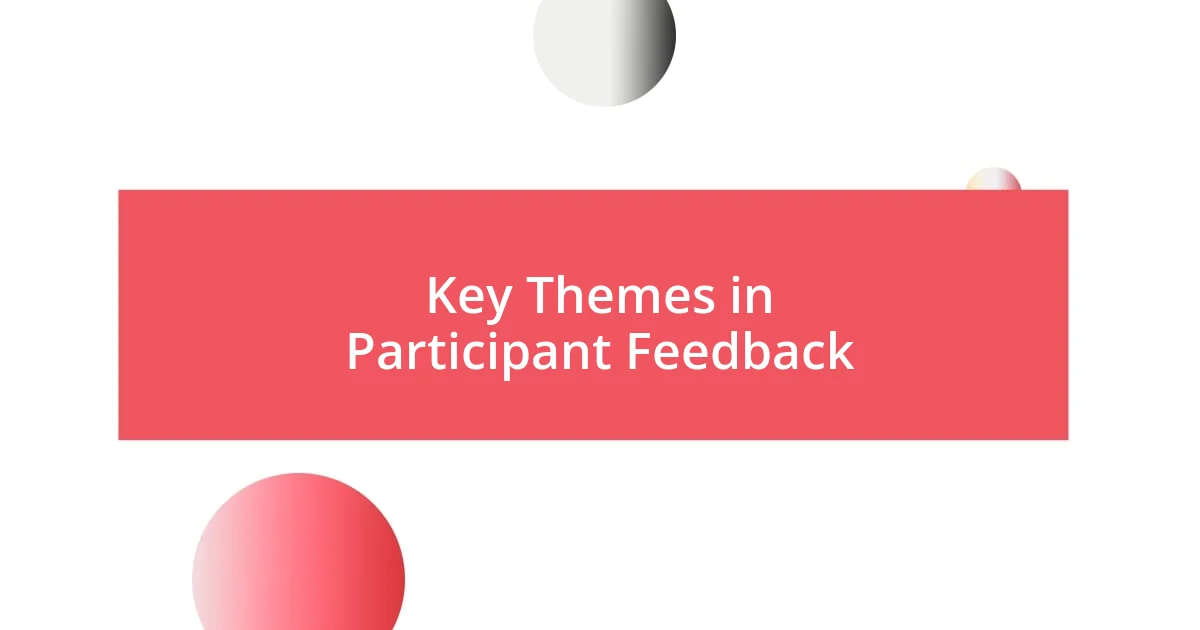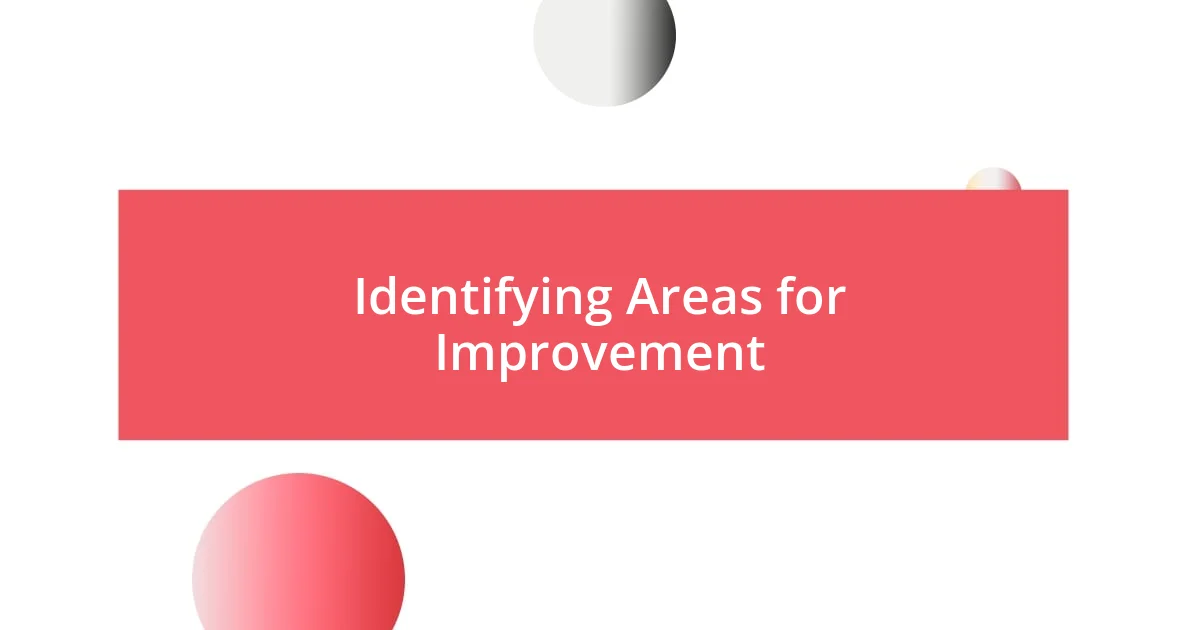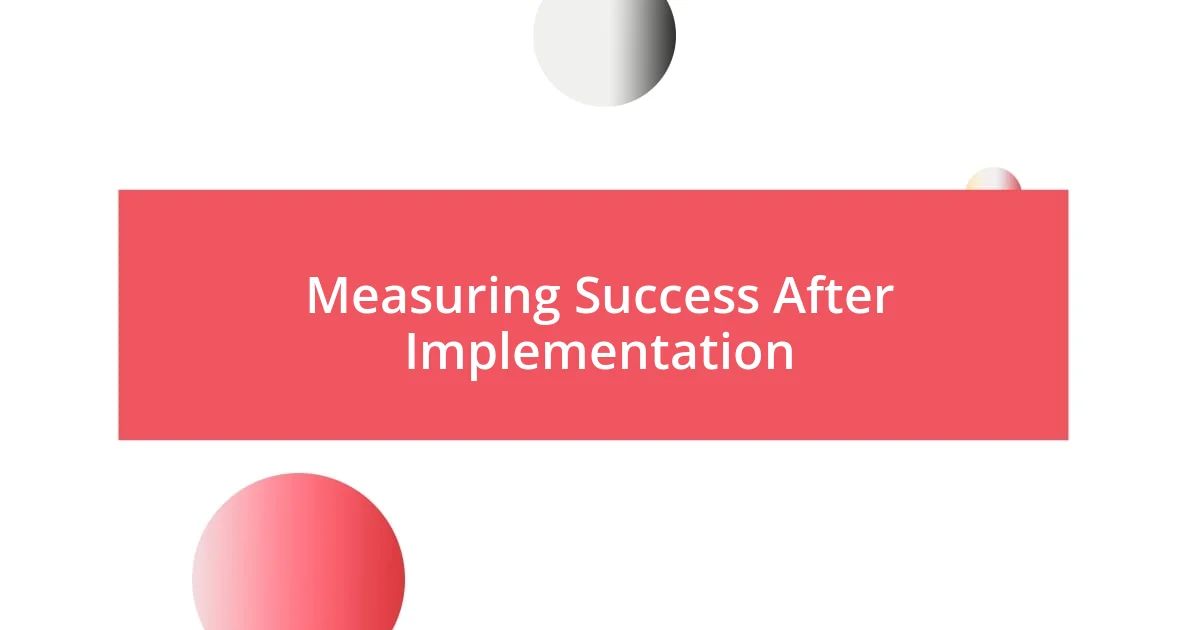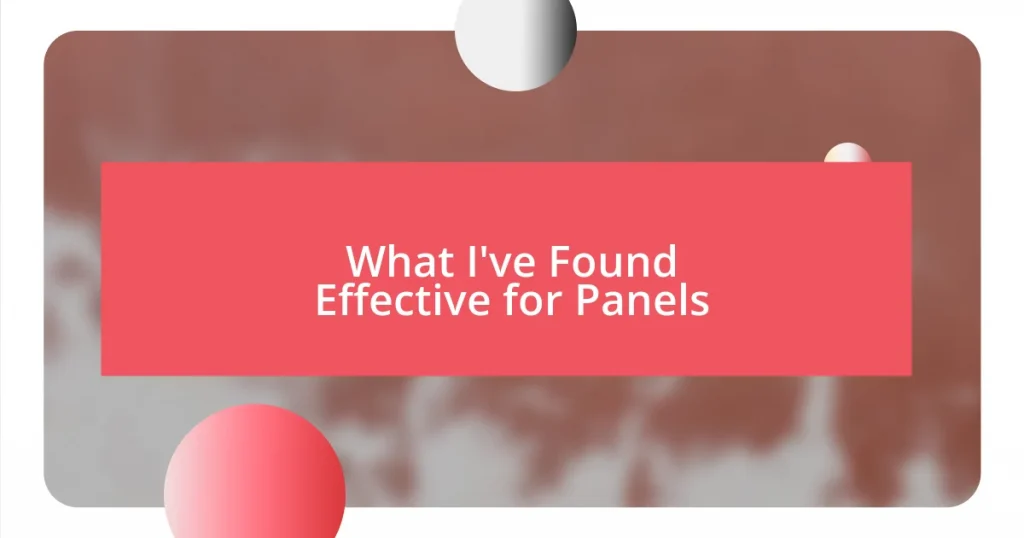Key takeaways:
- Post-workshop feedback is essential for personal growth and improving future learning experiences, emphasizing the duality of personal preferences and universal effectiveness.
- Key themes in feedback include the importance of interactivity, clarity of content delivery, and pacing, all of which significantly enhance participant engagement and understanding.
- Implementing feedback effectively involves structured action plans, ongoing communication with participants, and measuring success through long-term outcomes and engagement metrics.

Understanding Post-Workshop Feedback
Post-workshop feedback serves as a vital tool for reflecting on the learning experience, offering insights into what worked and what didn’t. I remember attending a workshop once where the facilitator asked for our opinions at the end. Initially, I hesitated—would my thoughts really matter? But once I shared my perspective, I realized how crucial that feedback was, not just for the organizers but for myself as well.
When we examine feedback closely, it becomes clear that it’s more than just a collection of opinions; it’s an opportunity for growth. I often find myself contemplating whether the feedback reflects personal preferences or universal truths about the workshop’s effectiveness. This duality can sometimes be overwhelming, but it reminds me that every comment holds the potential to shape future learning environments.
Feeling vulnerable after sharing your thoughts can be intimidating, yet understanding that feedback is a shared journey often transforms this experience. Personally, I’ve learned to embrace this discomfort because it leads to richer discussions and better outcomes. Have you ever considered how your feedback might influence not only future workshops but also the facilitators’ growth as educators? It’s a powerful realization that makes the process feel deeply rewarding.

Importance of Feedback Analysis
Feedback analysis is essential because it transforms raw responses into actionable insights. I remember combing through feedback forms after a workshop I conducted, feeling a mix of anxiety and excitement. It can be disheartening to read negative comments, but I grew to appreciate them as opportunities for improvement. They don’t just point out flaws; they offer guidance that helps refine my approach for future sessions.
Key reasons why feedback analysis is important:
- Enhances Future Workshops: Understanding what resonates with participants helps tailor future workshops to meet their needs.
- Builds Empathy: Analyzing feedback fosters a connection with attendees’ experiences, leading to a more inclusive environment.
- Encourages Growth: It highlights areas for personal and professional development, pushing facilitators to evolve in their practices.
- Stimulates Engagement: When participants see their feedback valued, they are more likely to engage in future sessions, feeling their voices matter.
- Creates a Culture of Improvement: Continuous feedback analysis helps establish an environment where growth is valued, making learning a collaborative effort.

Key Themes in Participant Feedback
When sifting through participant feedback, I often notice recurring themes that reveal much about the overall experience. One theme that stands out is the emphasis on interaction; many participants highlight that engaging activities significantly enhanced their learning. I recall a workshop where we broke into small groups for discussions. The participants expressed that these moments were not only enjoyable but crucial for grasping the material. This simple shift in format can make such a difference, showcasing how vital interaction is to creating an enriching environment.
Another prominent theme centers on clarity of content delivery. I’ve personally observed that when workshop facilitators articulate their points clearly, attendees feel more confident and involved. In a workshop I attended, a presenter used storytelling to explain complex theories, and the feedback was overwhelmingly positive. Participants appreciated how the session was structured, allowing them to connect with the information more profoundly. This insight reinforces the idea that clarity can bridge the gap between confusion and understanding.
Finally, the importance of timing is a key aspect that often emerges from feedback discussions. I’ve found that pacing plays a significant role in keeping participants’ attention. For instance, in a recent workshop where the tempo was just right—not too rushed and not dragging—they reported feeling engaged throughout. Reflecting on this, it’s clear that timing isn’t just about scheduling breaks; it’s about the rhythm of the session as a whole.
| Theme | Participant Insights |
|---|---|
| Interactivity | Engaging activities enhance the learning experience significantly. |
| Clarity of Content | Clear delivery fosters confidence and deeper understanding among attendees. |
| Timing | Pacing impacts attention and overall engagement during the workshop. |

Identifying Areas for Improvement
One area I consistently identify for improvement is the structure of workshop activities. I remember a session where I lumped too many activities together, which left participants feeling overwhelmed and disengaged. Was it really about the quantity of activities, or should I have focused on quality? This experience taught me the importance of pacing and the need to balance content delivery with moments of reflection.
Another crucial element I’ve recognized is the necessity of feedback loops during the workshops. In a previous session, I asked for real-time feedback, and the results were enlightening. Participants shared their thoughts on what wasn’t working while the session was still in progress. It made me realize that involving attendees in the process not only kept them engaged but also equipped me to pivot and adjust my approach right away. Don’t you think timely adjustments can create a more dynamic learning environment?
Lastly, I often reflect on the clarity of my communication. There was a workshop where I tossed around technical jargon without checking in with my audience. I could see the confusion spreading across their faces. That moment struck me; if my attendees can’t follow along, then what’s the point? This insight pushed me to simplify my language and find relatable examples, ensuring that everyone can fully engage with the material.

Strategies for Implementing Feedback
In my experience, creating a structured action plan based on feedback is essential for effective implementation. I once facilitated a workshop where participants suggested specific changes, and I organized them into a detailed checklist. It transformed their suggestions into actionable steps that I could address systematically. Isn’t it amazing how a bit of organization can turn feedback into tangible improvements?
Another strategy I’ve found invaluable is to foster an ongoing dialogue with participants after the workshop. I remember reaching out to attendees a few weeks later to see how the implemented changes were resonating with them. Their responses provided ideas for future sessions and showed me how the adjustments impacted their learning. This connection not only reinforces my commitment to improvement but also builds a sense of community. Don’t you think that ongoing communication strengthens the learning experience?
Finally, I make it a priority to reflect on feedback in team meetings. Sharing insights with colleagues not only opens up discussions about different perspectives but also sparks creative solutions. I recall a time when we collectively reviewed past evaluations and stumbled upon a gold mine of ideas for innovation. Wouldn’t you agree that collaboration enhances our ability to adapt and grow from feedback?

Measuring Success After Implementation
Measuring success after implementing feedback can often feel like a moving target. I recall a time after a workshop when I asked participants to rate the effectiveness of the changes we made. Their responses illuminated unexpected areas of success—like how one small adjustment made discussions feel more inclusive. Isn’t it fascinating how a minor tweak can lead to significant shifts in engagement?
Another effective method I’ve employed is to track long-term outcomes rather than just immediate reactions. After one session, I followed up months later to understand how the strategies we practiced had influenced their work environments. Seeing how those concepts transformed their daily routines was both rewarding and affirming. It’s moments like these that remind me of the lasting impact we can create through thoughtful implementation. Does the thought of ongoing improvement resonate with your experiences?
Finally, I believe that using measurable indicators can clarify our success in tangible ways. For instance, I analyzed participant feedback against engagement metrics, like attendance and participation rates. I found that the stronger the connection participants felt, the more likely they were to engage in future sessions. This correlation not only validated my efforts but also motivated me to keep refining my approach. Have you ever found similar patterns in your experiences?

Continuous Feedback Loop Creation
Creating a continuous feedback loop is something I’ve come to value deeply. After one memorable workshop, for example, I instituted a quick, anonymous online survey for participants to share their thoughts right after the session. The instant feedback was eye-opening! It allowed me to gauge their reactions while the experience was still fresh, ensuring the insights were raw and genuine. Have you ever noticed how timely feedback often leads to richer, more detailed responses?
In nurturing this feedback loop, I was surprised by how often participants appreciated the chance to provide input beyond the workshop itself. A few weeks later, I set up virtual coffee sessions, inviting attendees to discuss what they’d implemented from my suggestions. These informal chats not only revealed how they applied those changes but also sparked ideas for future workshops. It felt rewarding to know I was part of their ongoing growth journey. Don’t you think that this kind of engagement forges stronger connections between the facilitator and the participants?
Additionally, I always encourage participants to share their feedback openly during follow-up sessions. I remember one particular instance where someone brought up a challenge they faced after applying my techniques. Instead of feeling disheartened, it led to a dynamic group discussion about troubleshooting and collective problem-solving. It reminded me that feedback shouldn’t just be a one-way street; it can create opportunities for collaborative learning. Wouldn’t you agree that when feedback turns into a conversation, it enriches everyone’s experience?













